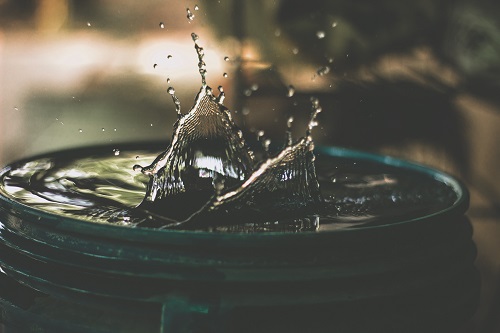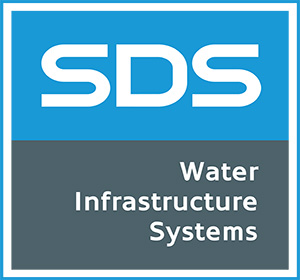Can rainwater harvesting systems be considered to be Sustainable Drainage Systems (SuDS)?
At first sight, they don’t seem much like SuDS… hard-engineered, a succession of tanks and plumbing, pipes, valves and connections, rainwater harvesting systems can seem a far cry from green infrastructure. You certainly wouldn’t consider growing plants in them!
If you view the main purpose of rainwater harvesting as providing a reservoir to replace mains-supplied water, you may not list them among primary components for flood control. Indeed, you would not be alone. Many guidance documents produced by Local Authorities and Water Companies for drainage design engineers to follow either don’t include or quickly demote rainwater reuse. In the hierarchy of drainage methods they are given to select from, infiltration is most frequently top of the list.
But is infiltration always best? Is it most sustainable to plan for a precious resource to trickle through our fingers into the ground? We wouldn’t normally discard paper. If someone throws glass or recyclable plastic bottles onto the ground, we are rightly enraged.
OK, so I’m playing devil’s advocate; of course, sometimes we need surface water to replenish groundwater levels. But our minds are surely set to waste a resource that is becoming more precious by the day. Consider that May 2020 was the driest on record in England, as well as being the sunniest, then June was the wettest in many areas. These extremes followed hard on the heels of a winter of often unprecedented rainfall – including the wettest February on record.

Scientists have been warning for a long time that climate change will bring more extremes. There will be longer periods of drought, interspersed by more intense periods of heavy rain – heavy rain that can cause flash flooding. Indeed, in the past few weeks we have experienced both. And yet, as we valued the water we use to wash our hands during this pandemic, so we continued to enthusiastically water our lockdown gardens without hardly a second thought during the summer months.
The UK is facing severe water shortages, and demand could outstrip supply within 20 years, the Environment Agency has warned. Yet the “Great British Rain Paradox” survey, published in June 2020, revealed most people consider the UK to be a ‘wet and rainy’ country where water is abundant.
We have got to be missing something. Let’s check the main guidance document for SuDS – CIRIA C753 The SuDS Manual, widely acknowledged as the ‘design bible’ for sustainable drainage systems across the UK. It mentions “rainwater harvesting” 105 times, has a complete section dedicated to it, and it is listed as a key function of SuDS. Using surface water as a resource is listed as the number 1 design criteria and the Manual makes it clear that rainwater harvesting should be a priority design consideration before other drainage methods are even considered. The London Plan follows this guidance – a policy which is leading to the emergence of significantly more commercial and residential schemes.
In Wales, the Statutory National Standards for Sustainable Drainage Systems also set out as a first priority that surface water runoff is collected for reuse. Very similar detailed standards were rejected in England with the decision to abandon Schedule 3 of the Flood and Water Management Act. Currently, the English non-technical standards are subject to a Government review.
It’s high time we see rainwater reuse and flood control as two sides of the same coin. It may not even be necessary to use two different tanks to store the water. New technologies and “hybrid” systems, combining natural features such as ponds with hard-engineered devices, have been proven that enable the same retention facilities to be used to save rainwater for reuse while providing a safe storage space to capture excess surface water and prevent flash flood events.
Until recently, the consideration of what happens if your rainwater collection tank is full and it’s still raining has been a key concern; to avoid flooding, and meet discharge consents, most designs have required a second attenuation or storage tank. Furthermore, regulations demand that the collection tank has the capacity to store 18 days’ worth of water, with an additional attenuation tank for drainage. These requirements can be costly, both in terms of capital and installation costs, as well as in land take.

Now, new technologies are emerging in the UK that make use of advances in ‘smart’ instrumentation, telemetry and cloud-based management and monitoring systems to develop intelligent rainwater reuse systems. The central principle of SDS Intellistorm® is the use of weather prediction data, downloaded via secure mobile phone signal, to control the levels of rainwater in a single tank for both attenuation and reuse. When a storm is predicted, the tank level can be lowered if required in plenty of time sufficient to allow the spare capacity to be used as a defence against surface water flooding, while retaining as much water as possible for reuse.
As a result, the costs of building and operating a rainwater harvesting system are significantly lower. What’s more, a digital cloud-based system, such as SDS’S SYMBiotICTM, can also provide a wealth of data on system performance in order to better plan maintenance and demonstrate water savings in real-time.
SDS recently provided a rainwater harvesting system to a large supermarket, which provides rainwater for a car wash facility and toilet flushing. The company has reduced its annual water bill by £4,500, making it able to pay back the cost of the RWH system in just six years. Similar returns can be expected on distribution centres and leisure facilities, for example.
Every business case for rainwater harvesting is different, and expert organisations like SDS’s water recycling division, can advise on feasibility, correct sizing and work out the financial justifications for you. SDS is keen to talk to any commercial organisations or housebuilders who wish to partner with us in pioneering smart rainwater harvesting systems as a new sustainable technology that could be a true force for environmental progress.



